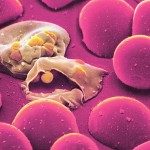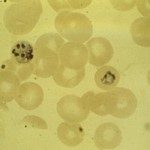Link to Pubmed [PMID] – 8575622
Dev Biol 1996 Jan; 173(1): 200-12
Cardiac actin is an early marker of cardiac and skeletal muscle lineages in the mouse. After birth, the gene is down-regulated in skeletal muscle. High-level expression of the murine cardiac actin gene in skeletal myotubes in vitro involves distal (-7.8/-7.0 kb) and proximal (-5.4/-3.5 kb) enhancer sequences as well as the proximal promoter (-0.7/+0.1 kb). Transgenic mice carrying an nlacZ reporter gene under the control of different fragments of the upstream region of the cardiac actin gene were generated. This analysis led to the conclusions that (1) the proximal promoter is a weak but tissue specific element in vivo, (2) consistent high-level expression in skeletal muscle depends on the presence of at least one of the enhancers, (3) expression in adult cardiac muscle requires a cardiac enhancer located in the (-5.4/-0.7 kb) region, and (4) a construct containing these three elements gives a strong specific expression of the transgene in the heart throughout the life of the animal and in embryonic skeletal muscle. All transgenes tested reproduce the down-regulation observed in adult skeletal muscle for the cardiac actin gene. Nonuniform expression of these transgenes in the heart may mark cardiomyocytes derived from different cardiac progenitors.

